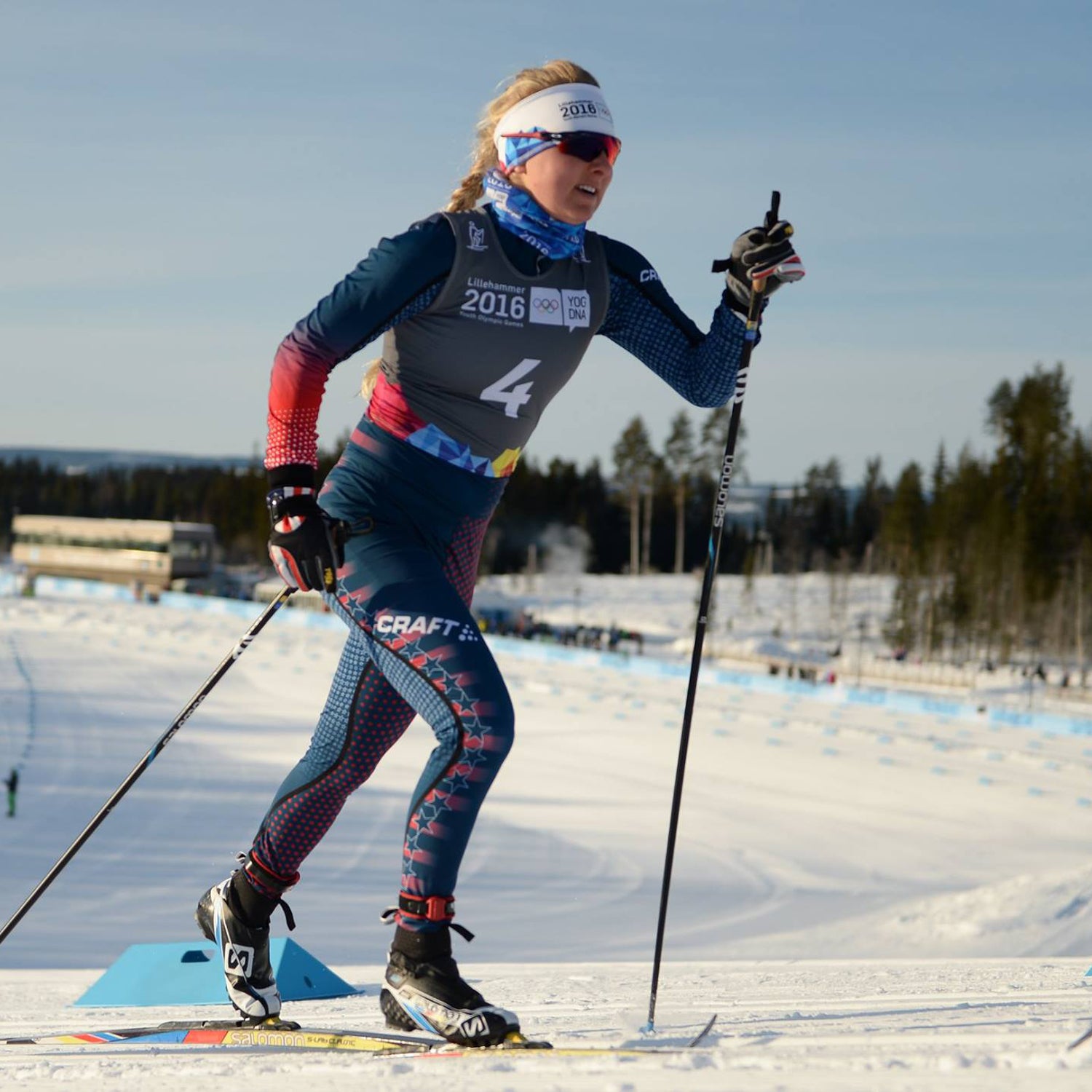There is more to what makes me feel like a good skier than how fast I can ski. Part of it is how fast I look.��
I have been racing for eight years, competing internationally for the last three, and I am a new member of the U.S. Cross Country Development Ski Team. Although being a cross country skier has been one of the best experiences of my life, the sport has always had body image issues.��Even in middle school, I was aware that nordic skiers are supposed to be lean and light. I always thought I was too strong for a skier, and that it made me too heavy to be fast.
I had been concerned about the way nordic skiers talk about our bodies��for the past couple of years,��and I'd started asking girls at training and race trips around the world for their��perspectives��on the issue. This��prompted me to create��a short video in October called “,” in which female skiers of all levels from around the world talk about how they have felt its pressure. I believe the issues raised by my fellow nordic skiers��in��the video also apply��to all kinds of endurance athletes.
The primary thing a skier battles out on the course is his or her own gravity. It doesn’t matter how big your muscles are compared to your competitors’ as long as they are big enough to move your own body from point A to point B the fastest. All of this boils down to skiers being hyper-aware of what is known as the power-to-weight ratio, which is exactly what it sounds like: how much power one can produce relative to his or her body weight.��
https://youtube.com/watch?v=dAhCeUMJtbA
This concept has become more than just a matter of physics to many athletes. As Annika Taylor, a member of the British national ski team, explained in my video, “skiers feel they need to fit a certain mold to be fast or to be desirable in the ski community.” Coaches and athletes consistently talk about how the leaner kids have an advantage with power-to-weight ratio.��And although it's never happened to me, I have heard stories from others who have either experienced��offhand comments or were directly told to lose weight to be a better skier. Sometimes it even comes from coaches or��parents.��
We overemphasize the power-to-weight issue while neglecting to talk about the body image problems it creates.��
Nordic skiers tend to be self disciplined and hardworking, which can actually be a disadvantage alongside the risk of the eating disorders. Someone who is tough enough to commit to 500-1,000 hours of training a year and can constantly push their physical limits��is often the same person who can starve himself or herself��to be thinner. Eating disorders such as anorexia and bulimia have varying levels of severity, and it’s important to realize that many athletes can suffer from an eating disorder that may not be physically severe or diagnosed as clinical, but can still have problematic symptoms and effects. There are physical risks such as osteoporosis, kidney failure, and heart failure. There are symptoms like muscle loss, dehydration, fainting, fatigue, hair loss, and overall weakness. There are also the mental effects—self loathing and loss of identity that can lead to anxiety and depression.��
We overemphasize the power-to-weight issue while neglecting the body image problems it��creates.��
Instead of talking about these serious issues, though, body image is more often given a joking treatment in the nordic skiing community. Many assume that skinny people aren’t sensitive to comments about size or weight, so��I frequently hear skiers sarcastically call each other “huge,” “yolked,” or “jacked.” My least favorite by far is when someone sarcastically says to the skinniest kid on the team, “You’re so fat!” I used to feel that if body image jokes weren't��aimed at people who are actually fat, then they’re okay. But I've realized it amplifies many athletes’ perceptions that some people are skinny while others aren’t. And the problem is that many believe a good skier must be skinny.��
I have struggled with my body image in the past, and again, no one ever called me fat. It was more that no one ever called me skinny, which made we wonder: Was I fat, or not as good an athlete? When I heard remarks like, “She’s light, so she will be a great distance skier,” or “He’s small, so he will be great on the hills,” ��I thought, “Does this mean I’m not good at distance skiing or hills?”��
The irony of this issue becomes clear when powerful skiers don’t feel lean or light enough, while smaller skiers don’t feel big or powerful enough. So I don’t believe we’re doing enough if we just avoid calling anyone “fat” or “big” directly to their face.
One day my strength coach told me, “You’re a power athlete. That’s your strength. That’s what makes you fast.” It was an amazing moment to realize that my body type, exactly as it was, made me fast in my own way. For many skiers, loving their body is not easy, but realizing that different body types have different strengths is a start, and this is something many professional skiers in my video tried to highlight. As Jessie Diggins, a member of the U.S. Ski Team, said, “You see all kinds of body types on the World Cup succeeding, and winning.”��It’s time to create a community where skiers can appreciate that there is a vast variety of bodies with a variety of strengths, and any of them can be fast.


